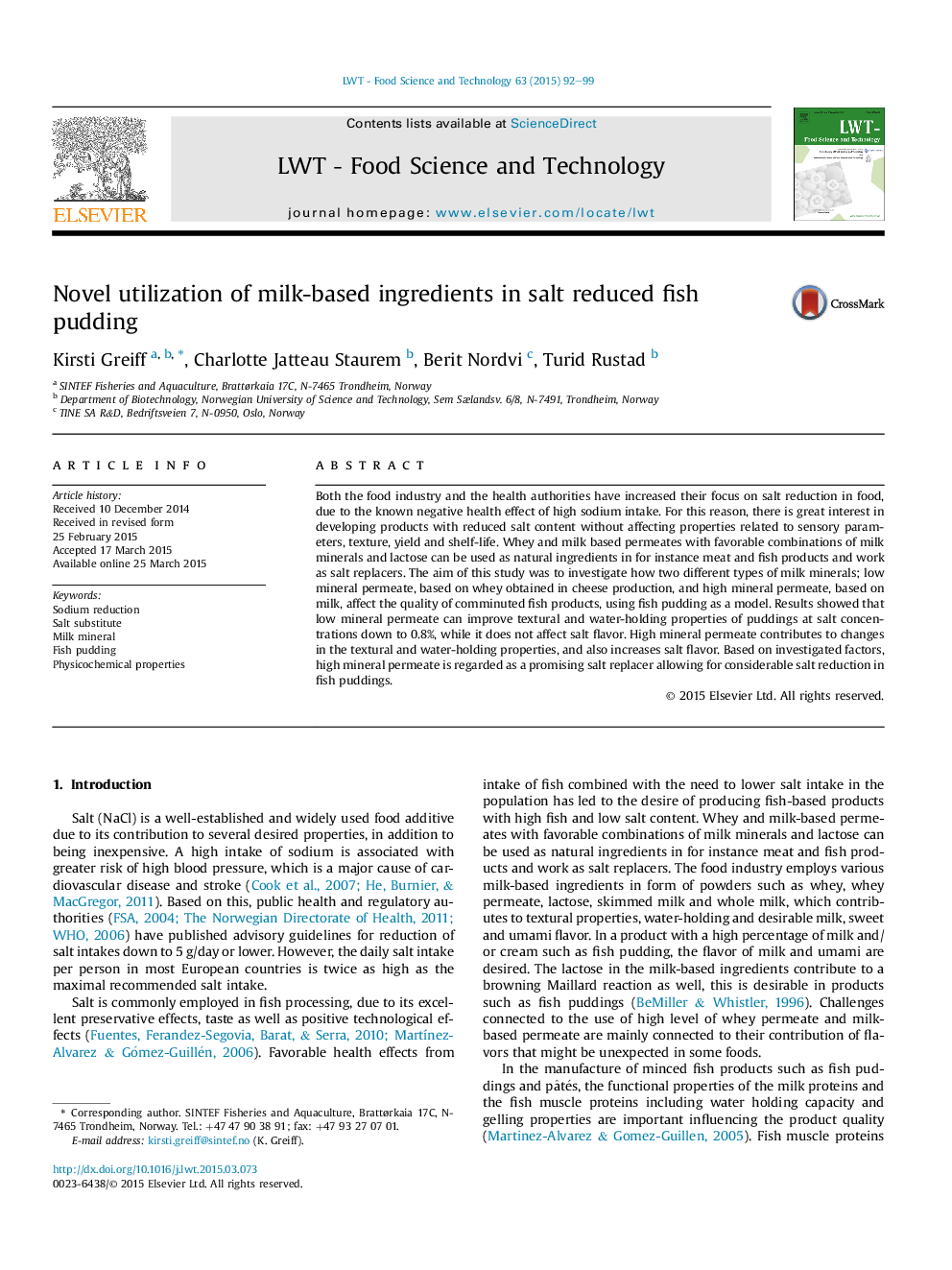| کد مقاله | کد نشریه | سال انتشار | مقاله انگلیسی | نسخه تمام متن |
|---|---|---|---|---|
| 6401991 | 1330885 | 2015 | 8 صفحه PDF | دانلود رایگان |
- Milk-based permeate powders are shown to affect physical properties of fish pudding.
- Milk salts affect solubility of proteins, increasing gel strength and WHC.
- Non-sodium ions from milk permeate contribute with salt flavour.
- Sensorial texture attributes correlate with instrumental texture.
Both the food industry and the health authorities have increased their focus on salt reduction in food, due to the known negative health effect of high sodium intake. For this reason, there is great interest in developing products with reduced salt content without affecting properties related to sensory parameters, texture, yield and shelf-life. Whey and milk based permeates with favorable combinations of milk minerals and lactose can be used as natural ingredients in for instance meat and fish products and work as salt replacers. The aim of this study was to investigate how two different types of milk minerals; low mineral permeate, based on whey obtained in cheese production, and high mineral permeate, based on milk, affect the quality of comminuted fish products, using fish pudding as a model. Results showed that low mineral permeate can improve textural and water-holding properties of puddings at salt concentrations down to 0.8%, while it does not affect salt flavor. High mineral permeate contributes to changes in the textural and water-holding properties, and also increases salt flavor. Based on investigated factors, high mineral permeate is regarded as a promising salt replacer allowing for considerable salt reduction in fish puddings.
Journal: LWT - Food Science and Technology - Volume 63, Issue 1, September 2015, Pages 92-99
